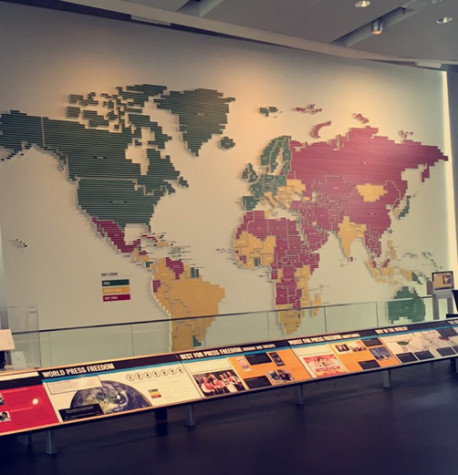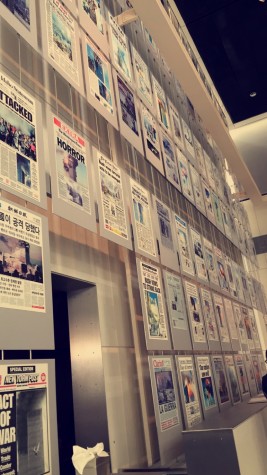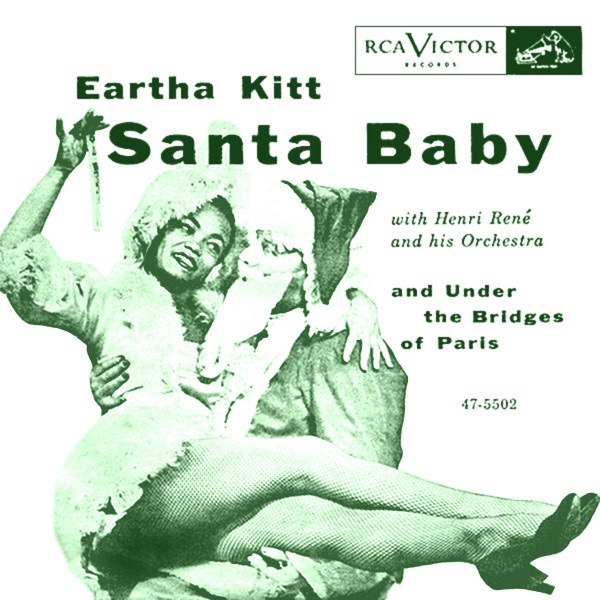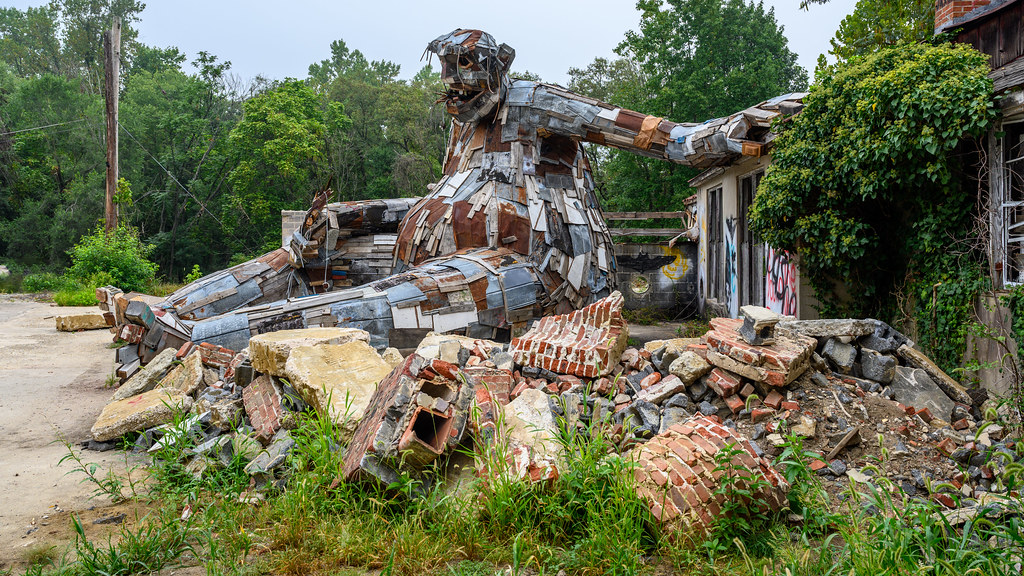The Newseum is a museum in Washington D.C. located on Pennsylvania Avenue which is dedicated to all things journalism and concentrates on the First Amendment. Visitors don’t have to be just interested in journalism in order to be interested in this museum. Although the museum is based around news, it is still a history museum. It is interesting to see how history and the news go hand and hand.
The Newseum is open from 9 AM to 5 PM daily but is closed on Thanksgiving, Christmas, and New Year’s Day. Tripadvisor named the Newseum 2015 Travelers’ Choice Top 25 Museums in the United States.
Interesting Exhibits at the Newseum
Some interesting exhibits include the Press Freedom Map, the 9/11 Memorial, The Journalists Memorial, and Today’s Front Pages.

Inside the newseum, you can look at how free the press in a specific country is
The Press Freedom Map is a map of the world but every country has been rated on a 0-100 scale, showing visitors if a country has free speech, partially free speech or is not privy to free press laws. Each country was shown to be either green (free), yellow (partially free), or red (not free). This map gets updated every year to keep it current.
The 9/11 Memorial was unlike any other I have seen. On the wall are the front pages of newspapers from all over the world reporting on the events that took place in New York that day. There are also a few pieces of wreckage. Projected onto one wall were notes visitors can choose to leave, honoring loved ones or just remembering the day. Last but not least there is a brief documentary about the tragic day. Unlike most of the other documentaries, this one tells the visitor what it was like to be a reporter that day. Teachers interested in showing this video can sign up for a free Newseum account which allows access to a bunch of videos including the 9/11 documentary.
Another exhibit at the Newseum is the Journalists Memorial. This two-story glass memorial shows the names of reporters, editors, etc. who lost their lives reporting the news or are currently imprisoned tortured, etc. in foreign countries.
Today’s Front Pages was outside the museum and shows what newspapers in every state and a few other countries were reporting on the day. The exhibit is updated every day and is really cool to see how different reports are from state to state– or country to country.
World Press Freedom Day and Press Uncuffed
“Every year, May 3rd is a date which celebrates the fundamental principles of press freedom; to evaluate press freedom around the world, to defend the media from attacks on their independence and to pay tribute to journalists who have lost their lives in the exercise of their profession,” as explained on the UNESCO website.
This year for World Press Freedom Day an organization named Press Uncuffed started selling bracelets. The bracelets are transparent and almost resemble that of a handcuff. On the bracelet is a name of a journalist who has been executed, imprisoned, tortured, etc. and the country in which they are have been persecuted.

In the 9/11 memorial, guests can see all the front pages of newspapers from that day these conditions.
Their mission statement it says “If a journalist still wears a cuff, so will we.”
I purchased 2 of these bracelets, the first one was in honor of Jason Rezaian, correspondent for the U.S. based Washington Post, is currently in Iran. Jason Rezaian remains in Iranian custody, going on 500 days in prison as of September 2015. The second was to honor Pedro Canche’, in Mexico. Pedro Canche’ was just recently released after spending almost 300 days in prison.
Jason Rezaian’s Story
“On a spring day in March 2014, Rezaian’s wife, Yeganeh Salehi (a journalist for the UAE’s National newspaper), and a female photographer were stopped in broad daylight in their car on a busy Tehran highway and taken into a van, where, friends say, a dozen men and a woman interrogated them about the photographer’s personal connection to the office of Iran’s president,” according to the New York Times.
Said van interrogation seems to have been a sign of internal politics that will now land Mr. Rezaian in deep trouble. The run-in, which has not been commented on, highlights the hidden dangers that foreign journalists face in Iran. Especially for people like Rezaian who has citizenship in both America and Iran.
In July 2014 Mr. Rezaian, his wife and another U.S. citizen were arrested. Today, only Rezaian remains incarcerated and is being charged for espionage, quickly approaching 500 days imprisoned as of September-October 2015. Rezaian has now been confined longer than any other foreign journalist of Iranian descent.
Using contacts with government sources is a common journalistic practice in most countries. In Iran it is viewed as suspicious and foreign journalists are assumed to be spies.
Friends and family of Rezaian say that he is a “a fair reporter and knew what to do and what not to do.”

Looking up the giant wall, guest can view just a few journalists suffering in countries that don’t allow press freedom
Robbie Stauder, a filmmaker and childhood friend from California said Rezaian “might have gotten too comfortable.”
If convicted, Mr. Rezaian faces up to 20 years in prison. He is denying all charges. The Washington Post has said, “from the outset that Mr. Rezaian is innocent of any wrongdoing and has described his prosecution as an unjust farce.”
The Post has looked to the United Nations for assistance to free him. The Post’s executive editor, Martin Baron, has called the case “a disgraceful violation of human rights.”
Rezaian faces four charges; espionage and accused Mr. Rezaian of having broken the law by writing a letter to President Obama. He has also been accused of collaborating with hostile governments. His final charge is collecting propaganda against the establishment of the Islamic Republic of Iran.
Pedro Canché’s Story
Pedro Celestino Canché Herrera, independent journalist and activist for Mayan causes, was placed in prison August 30, 2014.
Canché was imprisoned on charges of sabotage. He was accused of directing protesters to block access to Quintana Roo state water and sewage commission in the municipality of Felipe Carrillo Puerto on August 11, 2014. Canché denied being there that day although he had previously reported about the protests via twitter and youtube.
Violence tied to organized crime has made Mexico one of the most dangerous countries in the world for the press over the course of the past decade, according to CPJ research.
Sara Rafsky, CPJ’s American Research Associate stated that “Mexico is already one of the most dangerous countries for the press. Authorities should ensure that journalists do not face the additional threat of imprisonment or state retaliation.”
After serving 272 days in prison, Canché was released from prison on May 29,2015 with “reports of process violations.”
More About the Newseum
If interested in going to the Newseum, now is the time. Right now there is a 10% discount on all general admission tickets. Normally tickets run for $22.95 for adults (ages 19-64) and $13.95 for children 6-18. Children under the age of 6 are admitted for free and senior citizens can purchase tickets for $18.95.
There is also something called the Press Pass Program that gives you free admission all year, 10 percent discount in the Newseum Store and Food Section, advanced notice of upcoming exhibits, etc. This program is $75 for an idividual of any age.
Current and upcoming exhibits at the Newseum include Inside Today’s FBI, Blood and Ink, First Dogs, and plenty more. Inside Today’s FBI include well-known cases the Federal Investigation Bureau, FBI has solved and information about what the FBI is doing in the war against terrorism. Blood and Ink “showcases more than 30 historic front pages from the Newseum collection spanning the length of the war, from the birth of the Confederacy to the death of President Abraham Lincoln,” as explained on the Newseum website. First Dogs shows images and stories of several presidents and their pets.












Dana Priest • Oct 21, 2015 at 1:49 pm
Stephanie!
Be a journalist! Apply to Merrill College at the University of maryland, College Park. We’re a quick subway ride just outside DC.
Best,
Prof. Dana Priest